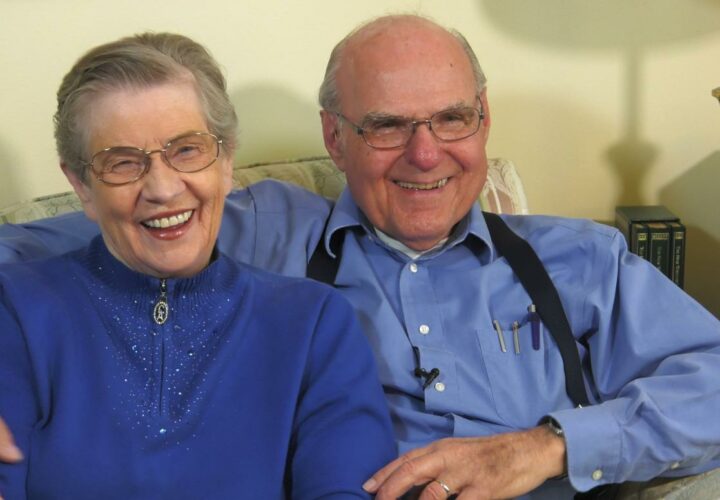When LaVonne Moore, 85, entered Ohio State University’s Wexner Medical Center study on slowing the decline of problem solving in Alzheimer’s patients, she had lost the ability to prepare meals. Two years after a pacemaker-like electrical device was implanted into the frontal lobes of her brain, she was able to initiate preparation for a meal, follow a simple recipe and cook the meal.
That might sound like a small victory for some. But for those with Alzheimer’s, a disease that has no real treatment and no cure, a a return of the even the smallest level of independence is groundbreaking.
Her 89-year-old husband, Tom Moore, said while her Alzheimer’s has not been halted, the progression has been slower than expected. “LaVonne has had Alzheimer’s disease longer than anybody I know, and that sounds negative, but it’s really a positive thing because it shows that we’re doing something right,” said Moore.
LaVonne also regained her ability to choose her clothing. Researchers said she was able to plan an outing, including figuring out how to get there, planning for the weather and bringing necessary items like money.
Most potential Alzheimer’s treatments are aimed at treating or preventing memory loss. But the device implanted into LaVonne’s brain, which has also been used in Parkinson’s patients, works to improve the responsibilities of the frontal lobe: things like making decisions, solving problems, carrying out plans and focusing on tasks.
“We have many memory aides, tools and pharmaceutical treatments to help Alzheimer’s patients with memory, but we don’t have anything to help with improving their judgments, making good decisions, or increasing their ability to selectively focus attention on the task at hand and avoid distractions,” said Dr. Douglas Scharre, co-author of the study and director of the Division of Cognitive Neurology at Ohio State’s Wexner Medical Center’s Neurological Institute. “These skills are necessary in performing daily tasks such as making the bed, choosing what to eat and having meaningful socializing with friends and family.”
The device works like this: Electrical wires are implanted into the patient’s frontal lobe. A battery pack implanted in their chest sends electrical currents to the brain, a process called deep brain stimulation, or DBS.
The Ohio State study only tested DBS on three patients, but study results, published in the Journal of Alzheimer’s Disease, showed that all three patients experienced a slowing of the progression of Alzheimer’s. Two of them showed a significant halt in decline when compared to another group of Alzheimer’s patients who did not receive DBS.
“By stimulating this region of the brain, the Alzheimer’s subjects cognitive and daily functional abilities as a whole declined more slowly than Alzheimer’s patients in a matched comparison group not being treated with DBS,” said Scharre.
While the study did not use a placebo treatment to compare results, outside experts say the results are encouraging enough to continue to evaluate how DBS might treat Alzheimer’s.
“This small phase I trial is useful in demonstrating that this invasive treatment is safe and has no serious side effects in Alzheimer’s, but the observed benefits in two of the patients must be treated with caution,” said Dr. Carol Routledge, Director of Research at Alzheimer’s Research UK. “The study did not compare against a dummy treatment and so while signs of benefit are worthy of follow-up, the full benefits and cost-effectiveness of this treatment need much more robust investigation in larger trials.”
Routledge adds that the novel approach in treating Alzheimer’s by stimulating the frontal lobe should be continued. “Previous research with deep brain stimulation in Alzheimer’s has shown mixed results, but studies have not focused on brain regions responsible for decision making and problem solving before. While memory is a key problem in Alzheimer’s, changes in thinking skill have an equally devastating impact so it’s important that treatment approaches address these symptoms too,” she said.
